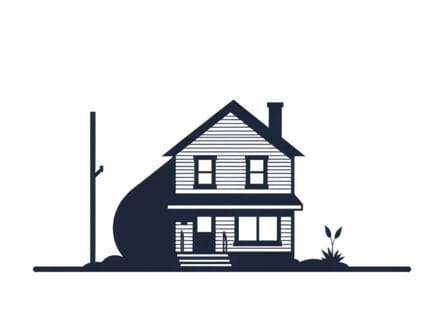In the realm of land use and zoning laws, the term ‘pre-existing nonconforming use’ plays a critical role in determining what kinds of structures and activities can continue despite changes in local regulations. Property owners, developers, and local governments must understand how this concept applies, especially when zoning ordinances are revised. This legal concept acknowledges that some properties may have been built or used in ways that were perfectly legal at the time but are now inconsistent with new zoning rules. Rather than penalizing property owners, the law allows such uses to persist under specific conditions. Understanding the implications and limitations of a pre-existing nonconforming use is crucial for avoiding disputes and legal complications.
Definition of Pre-Existing Nonconforming Use
A pre-existing nonconforming use refers to a property use or structure that was lawful at the time it was established but has since become inconsistent with new zoning ordinances or land use regulations. It is often referred to simply as a nonconforming use. The key characteristic is that the use or structure predates the zoning change that rendered it noncompliant.
Key Characteristics
- Legally established before zoning changes
- Not in compliance with current zoning regulations
- Still in operation or existence after the change
This concept is not about illegal construction or unauthorized land use; rather, it protects prior lawful uses from being abruptly forced to shut down due to a new rule.
Examples of Pre-Existing Nonconforming Use
To better understand this term, it helps to look at real-world examples:
- A factory operating in an area later rezoned for residential use.
- A small retail store built in a district that now only allows office buildings.
- An apartment complex that exceeds the current height or density restrictions for the area.
In each case, the business or structure was legally established but now stands out as a nonconformity because the zoning requirements have evolved.
Legal Recognition and Protection
Most zoning codes include provisions that recognize and protect pre-existing nonconforming uses. The intent is to avoid causing undue hardship to property owners who acted lawfully under the previous code. While protection is typically granted, it is not unlimited.
Typical Protections Include:
- The right to continue the existing use
- The ability to perform maintenance and minor repairs
- Exemption from new zoning requirements, but only within defined limits
However, once a nonconforming use is discontinued or abandoned usually for a defined period such as six months or a year it may lose its protected status. At that point, any new use must comply with current regulations.
Restrictions and Limitations
Although nonconforming uses are allowed to persist, there are several restrictions placed on them to prevent their indefinite continuation or expansion. These limitations are crucial to zoning authorities seeking to eventually bring all properties into full compliance with current laws.
Common Restrictions May Include:
- No enlargement or extension of the nonconforming structure or use
- No structural changes unless necessary for safety
- No change of use to another nonconforming use
- Limitations on repair if the building is damaged by fire, flood, or other disasters
Local governments apply these limitations to control and gradually phase out outdated or incompatible uses.
Loss of Nonconforming Status
Once a nonconforming use has been abandoned or discontinued, the right to continue under that status is usually forfeited. The time frame for abandonment is typically defined in the zoning ordinance and may vary from one jurisdiction to another.
Triggers for Loss of Status:
- Vacancy or non-use for a specific duration
- Voluntary termination of the nonconforming activity
- Destruction of the structure beyond a certain percentage of its value
Once a nonconforming use has lost its legal standing, any new construction or activity must conform to the latest zoning laws.
Legal Disputes and Enforcement
Issues involving pre-existing nonconforming uses often lead to disputes between property owners and zoning authorities. Property owners may assert their rights to continue operations, while municipalities may argue that the nonconforming use has expired or expanded illegally.
These disputes are usually resolved in zoning board hearings or in court. To avoid problems, property owners should keep thorough records that show continuous use and compliance with any maintenance limitations.
Benefits and Drawbacks
While pre-existing nonconforming use protections provide valuable rights, they can also present challenges for both owners and local communities.
Benefits for Property Owners:
- Allows continued use of valuable property investments
- Avoids sudden business closures or loss of residential capacity
- May increase resale value if the nonconforming use is profitable
Drawbacks for Local Governments:
- Delays efforts to modernize or standardize land use
- May create safety, traffic, or environmental concerns
- Can be difficult to monitor and enforce limitations
These competing interests make it essential for communities to adopt clear guidelines and procedures for regulating nonconforming uses.
Strategies for Managing Nonconforming Uses
Urban planners and local governments may adopt different strategies to address the challenges posed by pre-existing nonconforming uses. Some may seek to phase them out through attrition, while others may create legal mechanisms to integrate or grandfather these uses into new frameworks.
Common Management Approaches Include:
- Amortization schedules that provide a fixed time for discontinuation
- Incentives to relocate or convert the use to a conforming one
- Special permits that regulate but permit continued operation
- Regular inspections to ensure compliance with safety codes
These strategies aim to balance property rights with community planning goals.
The concept of pre-existing nonconforming use is a crucial element of zoning law that safeguards the rights of property owners while allowing local governments to evolve land use policies. Though it permits continued operation of uses that no longer align with updated zoning, it also imposes restrictions to limit expansion and encourage eventual conformity. Property owners must understand their rights and obligations under this legal framework to avoid losing their protected status. Meanwhile, communities must apply fair and consistent rules to ensure that these nonconforming uses do not interfere with long-term development objectives.
